In the May 1995 issue of KITPLANES magazine, we called the Zenith STOL CH 701 “more than just a pretty face” as a tongue-in-cheek reference to its rather ungainly, but highly purposeful, appearance. First flown in 1986, the little CH 701 is a perfect example of form following function. Everything about it was designed for a specific purpose. When Chris Heintz laid down its lines, he was all about making it simple to build, easy to fly and rugged enough to hold up in the field.
The nice part about looking for a secondhand STOL CH 701 (or the follow-on STOL CH 750 and its Cruzer and Super Duty versions) is that the original kit supplier is still around. Zenith continues to produce improved versions of the same product, so factory support is a given. After 35 years, there’s not a lot that isn’t known about the CH 701. Even if it is an Experimental aircraft, wherein each flying example is free to vary somewhat from its littermates, the underlying concept has proven sound.
As Zenith Aircraft president Sebastien Heintz says, “Popularity of the STOL CH 701 actually continues to grow over the years, mainly because it does what it was designed to do so well. We’ve seen a rise in the popularity of short takeoff and landing and bush airplanes lately. Not many of the more than 1000 STOL CH 701s flying today can be found at airports. Most are operated from short off-airport grass fields.”

History
After designing several low-wing two-seat sport airplanes, aeronautical engineer Chris Heintz applied his French and Canadian aerospace industry experience to a backcountry aircraft, optimized for short takeoff and landing performance and life in the bush, in compliance with Canada’s Advanced Ultralight design standards that he helped develop. His previous creations had been given the family name “Zenith” as an anagram of the letters in his name, and when Zenair, his Midland, Ontario-located company, expanded southward to a mid-U.S. base in Mexico, Missouri, in 1992, the STOL CH 701 kits started flowing from a modern Zenith Aircraft Company factory.
Not everything that looks like a STOL CH 701 has roots as a Zenith kit. Zenith still sells plans to scratch-build the airplane, so it’s possible for a builder to put together an aircraft from scrounged-up bits and pieces (although it would be much easier to buy at least some parts from the factory) if wanting to go it alone. A Czechoslovakian license-built version was produced for the European market from 1992 to 2006. In addition, there have been some knockoff CH 701 imitations built, always the mark of a successful design.
The earliest CH 701s had a single fuselage fuel tank and were powered by two-stroke Rotaxes, the 50-hp 503 or 64-hp 582, which were adequate for its gross weight of 960 pounds. It didn’t take long, of course, for builders to want more of everything, including the 80–100 hp Rotax 912 four-stroke engine, and the CH 701 SP was developed with 10-gallon wing tanks and a gross weight of 1100 pounds. The beefier STOL CH 750 came along in 2008 to take full advantage of the 1320-pound Light Sport Aircraft weight limit, with bigger doors, aft windows and a wider cabin; as an Experimental kitbuilt airplane, the CH 750’s gross weight can be as high as 1440 pounds.
Not everyone wants extreme STOL performance, so to optimize cross-country performance the CH 750 Cruzer version, introduced in 2013, did away with the leading-edge slats for a cleaner wing. It also uses smaller tires with wheel pants and has a redesigned tail. Lastly, returning to the extra-STOL roots, the latest CH 750 Super Duty scales up the lightweight CH 701/750 airframe to handle power from a four-cylinder Lycoming-style engine. Other features include heavier landing gear, a third seat in back, and the novel “Unpanel” movable glass instrument panel. The CH 750 SD grosses at 1900 pounds.

Design Details
Zenith Aircraft kits were always designed to be completed with common hand tools like aviation shears, pulled-rivet guns and electric drills. That criteria makes it possible to build the CH 701 from plans, if a hard-core builder wants to scrounge up sheet aluminum and form their own ribs. The lack of compound curves is evident to the onlooker, simplifying such construction.
Nearly every component of the STOL CH 701 is aimed at ultra-low-speed bush flying, including full-span flaperons, fixed leading-edge wing slats, effective controls and rugged, easy-to-repair structure. The airplane looks like it does for a reason. The kit’s content has matured greatly over 35 years, so later-built airplanes will benefit from CNC-cut and predrilled parts, and the availability of options like electric elevator trim.
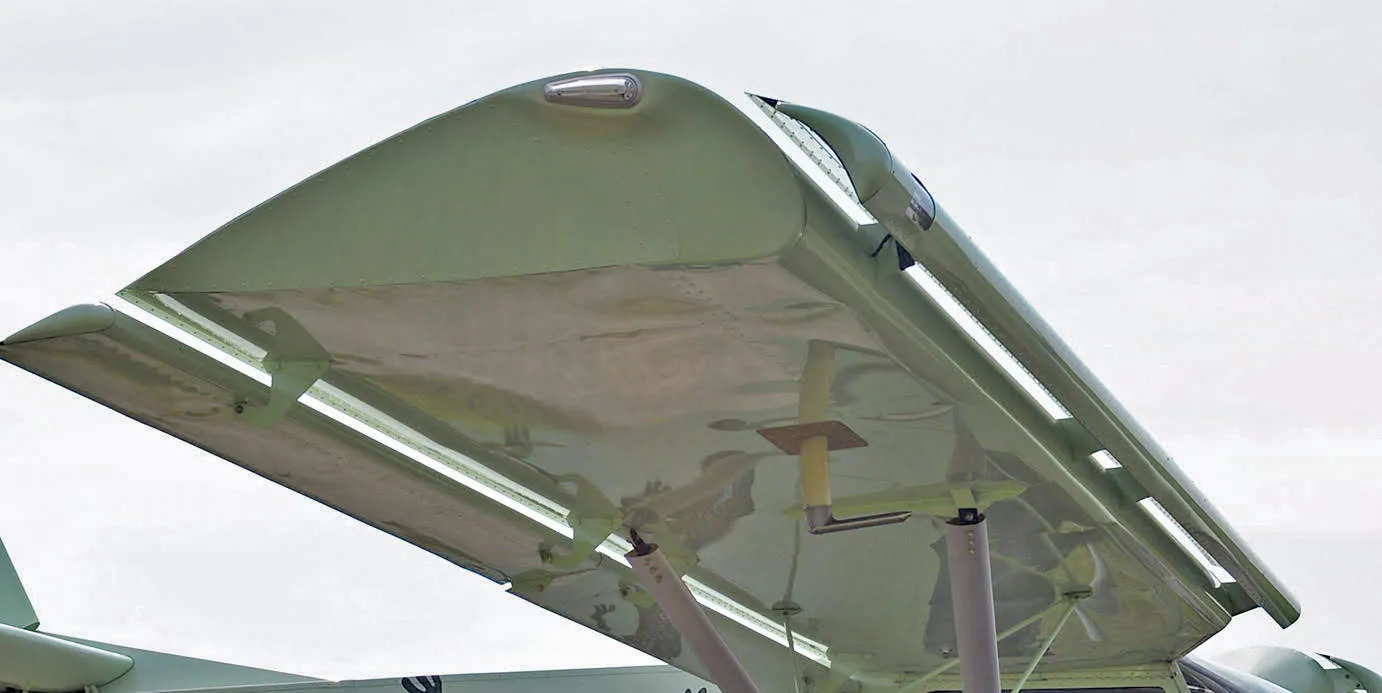
Heintz’s favorite construction medium is 6061-T6 aluminum, an alloy known for its corrosion resistance, with bits and pieces joined by thousands of aircraft-grade Avex pulled rivets. The CH 701’s fat high-lift wing section is mirrored by the reverse airfoil of the horizontal tail, giving it the “down lift” needed for low-speed effectiveness. The wing’s fixed slats, more or less invisible to the airflow at cruise, come into play at high angles of attack, joining the drooping offset flaperons for amazing feats of aerial legerdemain. The STOL CH 701’s quoted maximum lift coefficient is 3.10, very close to that of a Boeing airliner in landing configuration. A notched wing root enhances cockpit visibility. The Hoerner wingtips supposedly extend the effective span of the wing by 12 inches.
The CH 701’s rudder makes up most of the vertical tail, with only a vestigial dorsal fin ahead of the all-flying rudder. The aft fuselage lofts high enough to provide ground clearance while the wing is grabbing air during low-speed takeoffs and landings. Push-pull rods operate the flaperons, with cable systems employed for the rudder and elevator. The standard Chris Heintz central Y-shaped control yoke allows easier boarding and an unobstructed view of the panel, although conventional dual sticks are an option.
The landing gear is designed to take some off-road punishment; a stout one-piece aluminum spring is used for the main gear, and the steerable bungee-sprung nose gear strut carries a tire equal to the 16-inch mains. Although the tricycle gear works well and is by far the most prevalent, tailwheel gear is optional for those who insist, along with skis and Zenair-designed floats. The fuel system consists of two welded-aluminum wing tanks holding 10 gallons each; 12.5 gallon tanks are a later option.
The CH 701’s 40-inch-wide cockpit can be snug for two, with 40 pounds of baggage allowed on the shelf behind the seats. Domed door windows on some airplanes enhance cabin room and visibility. If you want more room, look for a CH 750. The doors were hinged at the front to fold forward 180° on a few early models, while the later top-hinged versions simply swing up under the wing. In the beginning the doors were straight, but soon took on a bowed shape to attain 40 inches of cockpit width.
What To Look For
When evaluating a used CH 701, it might be well to look for dings and damage accumulated in off-airport rough-field use by overly enthusiastic pilots. As Sebastien Heintz puts it, “Metal airplanes like the STOL CH 701 are great for inspections as you can’t easily hide structural damage. Sheet metal buckles, showing signs of overstress.”
If the airplane’s seen heavy service, the nose gear’s mounting attachment at the firewall should be looked at carefully for cracking. Loosened “smoking” rivets in the aft fuselage sides, while not structural, may need to be replaced. Because Experimental-category airplanes are each individual creations of the builder, you can expect variations to suit tastes, which may not equate to yours.
Other signs of abuse are non-symmetrical main gear appearance because the spring is bent and damage to the top longerons where the rudder hinge attaches, caused by dragging the tail from excessive rotation during takeoff and landing.
Engine Options
The CH 701 may have started out life as a very light personal bush plane using Rotax two-strokes, but the majority will be Rotax 912 powered, which turns it into a STOL tiger. That said, there have been a multitude of alternative engines installed in CH 701s, including those from Jabiru, ULPower, Viking and Valley Engineering, along with VW and Suzuki conversions. Chris Heintz’s basic criteria for the CH 701 is for engines of 65 to 100 hp, with an installed weight of up to 185 lbs. Stuffing in more power doesn’t get much more speed as the STOL-optimized airframe runs up against a wall of air no matter how much power is applied.
The 9-series Rotax engines are particularly well-suited for the CH 701, so attempting to save money and customize the airplane by using other powerplant options generally doesn’t wind up saving as much money as planned and takes up considerable time working out the details, even though Zenith offers mounts for popular alternative installations. For the used CH 701 shopper encountering a truly unique engine installation, don’t be tempted into taking a half-solved problem off someone’s hands. Hours flown trouble-free are the history you’re looking for.
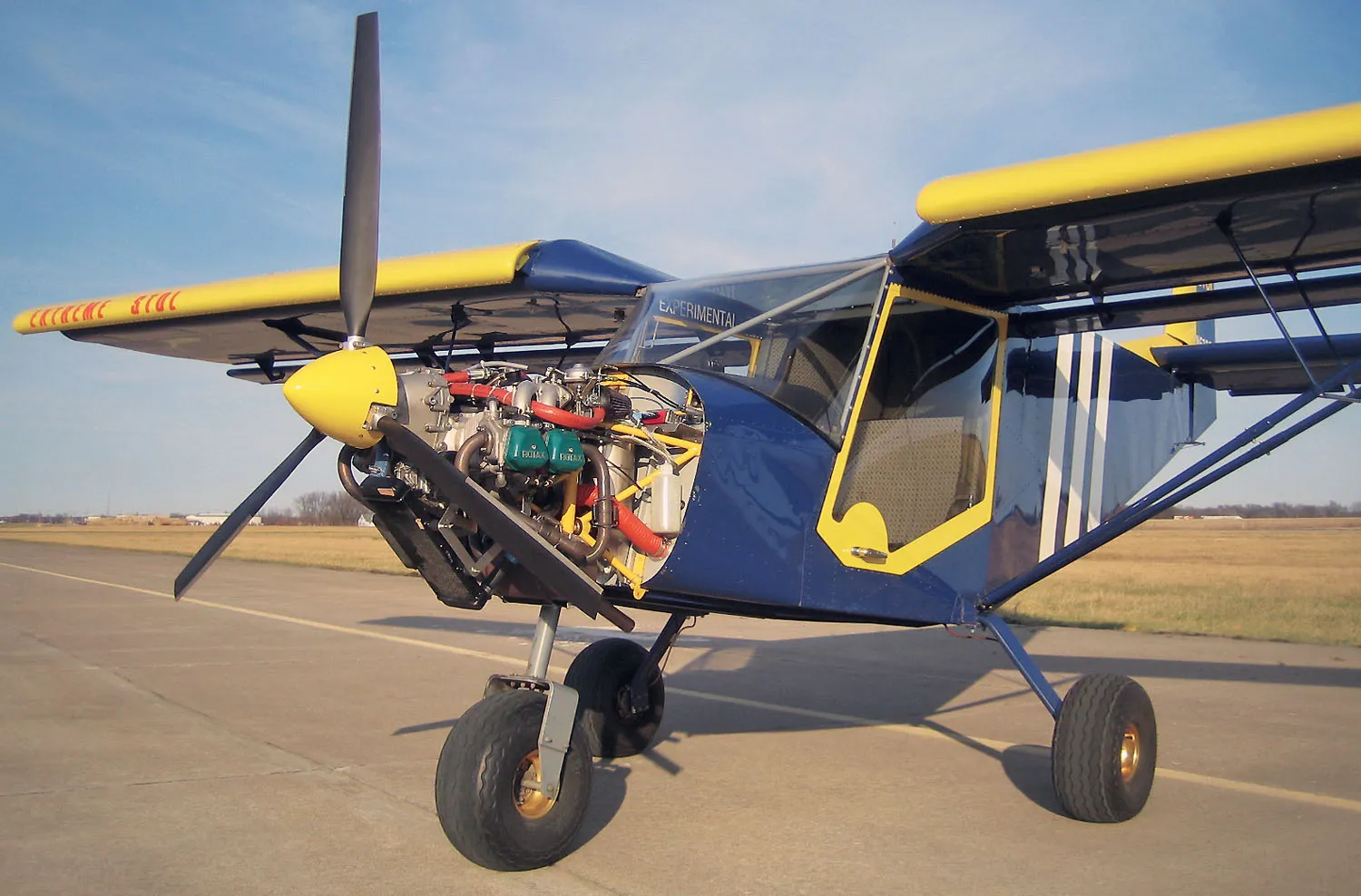
Performance and Handling
While long cross-country trips in a CH 701 are possible, its light wing loading (nine pounds per square foot) and 85-mph cruise speed mean that extensive travel isn’t its long suit. What it is uniquely suited for is popping in and out of small landing spaces with a light load of gear. Visibility is outstanding in every direction but above the wing, and dipping into a turn even cures that, thanks to the glass roof and scarfed wing root.
Ground handling is simple with the trike gear and direct-steering nosewheel, backed up with toe brakes. There’s some feedback in the pedals as you lumber over rough ground, but that’s to be expected with the simple linkage. Once warmed up and checked, you want to be sure you’re ready to fly, because when the throttle is opened the CH 701 is going be off the ground with the slightest aft pressure on the stick. Lowering the flaperons isn’t necessary. The specs show various takeoff rolls of 90 feet on pavement to 115 feet on grass, and they aren’t kidding. Using up a 200-foot gap between runway lights is not even trying. Once off, climbing at 50 mph or so will have you looking at the sky as the wing slats claw at the air. While the climb rate of 1200 fpm is impressive, it’s the angle of climb that really takes getting used to.
Cruising is mostly a matter of using whatever power setting you find comfortable. Top speed isn’t far off from what you’ll find at a quieter 4800 or 5000 rpm with the Rotax 912, normally 80 to 85 mph. The controls are light and responsive, other than some stiffness in the rudder circuit from the nose gear steering. The big flaperons generate a bit of adverse yaw, so you’ll need rudder input to accompany the stick movement.
Lowering the flaperons is allowed below 60 mph; trying to do it at a faster speed gives you a hand-delivered message that you need to slow down. Slow speed flight with the flaperons deployed is rather like tooling around in a helicopter. A benign stall can be expected in the low 30s (the pitot tube is unreliable at high angles), with a bit more break displayed at the stall when the flaperons are extended. For landing approaches a 50-mph target speed is a good beginning, until you get used to the rapid drag rise when power is reduced to idle in the flare. It’s easy to get stopped in a couple of hundred feet; the spec table shows an 80-foot rollout.
Resources
With such a large community of builders, there’s an abundant sharing of experiences on Facebook groups for builders and flyers of Zenith airplanes. Going to www.zenith.aero finds an active community of builders and pilots, eager to respond to postings and requests for help. And should a part be needed or a research question answered, Zenair Ltd. and Zenith Aircraft factory support is there.
Pricing
Much of the value of a flying homebuilt will be found in the instrument panel and engine, so there can be a wide variance depending on hours since overhaul and how extensive the avionics are. Full-boat STOL CH 750s might be priced at $75,000–$100,000 or more, while a very basic CH 701 with an off-brand engine might be found in the $30,000 range (caveat emptor). If taking over an uncompleted project, discount the “percentage finished” by half; that old adage of “90 percent done, 50 percent to go” still applies, especially when restarting the learning curve.
Summation
The Zenith STOL CH 701 occupies an almost unique niche in the world of light backcountry homebuilts, with its metal construction, three-decade history and ongoing kit production. And it’s a bunch of fun to fly.
Owner Feedback
Dennis Sapp
My Zenith STOL CH 701 is very good little airplane; I took 18 months and 1600 hours to build it in 2008–2009. I spent 300 hours studying the building instructions and 1300 hours actually putting it together. I’ve now flown 1200 hours behind the Rotax 912 S engine.
About what to look for when buying a CH 701, I would quote the DAR that signed off my airplane. He told me, “Look carefully at the build quality. If the builder was sloppy with the little things, he probably left some slack in major areas as well.”
I’ve flown the airplane from mid-Missouri to West Virginia, North Carolina, Texas, the Dakotas and, of course, Oshkosh. It’s comfortable in 6°F weather with my exhaust-muff heater, and it cruises comfortably at 90 mph with the installed autopilot. My favorite use for the airplane is landing on sandbars in the Missouri River and camping there overnight.
As far as modifications go, I strongly recommend replacing the stock round wing strut tubing with the streamlined struts from the CH 750. With careful testing, I found that I picked up a solid 5 mph, and I believe it improved the handling as a bonus.
Deane Philip
I have purchased multiple Zenith CH 701s for clients here in New Zealand. To date, I have been involved in the purchase of 12 units from the U.S. I guess there are really only a few simple things to consider, especially if you can’t physically get to look at the aircraft yourself, like our situation in New Zealand.
Like many amateur-built aircraft, quality will vary from plane to plane. Not all builders have the level of skill to complete the project well. In the past I have obtained the services of a suitable inspection company to give me accurate prebuy reports. However, there are a few basic things that can assist any buyer.
Firstly, plenty of good quality photos and a walk-around video of the finished aircraft will help. Also, a really keen builder will generally have a very good record and photos of their build process; this evidence is usually passed from owner to owner and is a good indicator of the care initially put into the aircraft.
There are things to consider if the aircraft must be shipped to its new owner. Does it need to be dismantled before shipping? If so, are you planning on doing it yourself or engaging a professional company? These are costs that must be taken into account, adding to the end cost of the flying aircraft. I have done a couple myself when I was in the U.S., but now I use a firm based in Lakeland, Florida. He will travel anywhere and do this work and also make arrangements for international shipping and paperwork. It’s a one-stop shop with very good rates, and it makes life easy because I know the aircraft will arrive here in perfect shape.
To ensure that the CH 701 is definitely the type of aircraft you want, do your research regarding condition, price and location. Other things to consider are engine type and age; this has a huge factor on resale value and confidence in flight. Some engine choices render the aircraft basically only worth the value of the airframe.
When a high-quality airplane becomes available, be prepared to act quickly as they do not last long. Be prepared to pay a fair price; as the old saying goes, “You get what you pay for.”
Lastly, I try to make the whole process as easy and hassle free as possible for the seller. This is the most important thing in my opinion, and it also helps me when contacting U.S. sellers from New Zealand. They see my location and initially think I’m a waste of time, but I can easily provide many references from sellers to back up my professional approach and verify that I’m easy to deal with.
Chris Brammer
I built a Zenith CH 750 Cruzer, powered by an O-320 Lycoming that delivers excellent performance. I made the first flight in 2017. It takes off in less than 200 feet, even without the slats on the wings, and it cruises at 115–118 mph without effort. I did install vortex generators along the wing and on the horizontal and vertical tail. The Cruzer wing uses a cleaner single-strut design compared to the CH 701, and of course, I have a 1440-pound gross weight to accommodate the larger engine.
Rather than paint, the entire airplane is covered with 3M 1080 vinyl wrap. I have a GRT EIS 4000 in the panel, along with two iPads and an MGL V6 transceiver. The AHRS and moving map are supported by a Levil Avionics 3AW driving the two iPads.
The only other major modification is a three-gallon header tank that I installed behind the rear cabin wall, which solved an uneven fuel-feeding problem from the wing tanks. I’m based on a nice airport with paved runways, although I do have 21-inch tires if I want to land at unpaved locations.
John Marzulli
I’m a Seattle-based computer engineer who has developed a low-cost heads-up display system for my CH 701 using a Stratux ADS-B receiver. Here are my thoughts on the airplane.
I made the first flight of my Zenith CH 701 in July 2011 and I have 1000 hours on it now; I’ve flown it to Oshkosh three times. I think the only choices for an engine are a Rotax or a Rotax. The 100-hp 912 is perfect for the airplane.
I have a very complete avionics installation, primarily Dynon, because they are a local company. I highly recommend them.
In my experience with the airplane, I’ve encountered a few things I can share. Like some other builders, I have found the left fuel tank can be reluctant to feed, allowing the right tank to get down to almost empty and maybe leading the engine to burp. I cured this by replacing the single gascolator feeding to the stock On/Off fuel valve with two separate gascolators, one for each tank, and a Left/Right fuel selector. Additionally, I had a fuel-related forced landing one warm day when I took off, climbed to 8000 feet to get over the mountains and then descended rapidly on the other side. I dead-sticked into a 300-foot-long meadow. I don’t think the stock fuel caps were vented sufficiently; I replaced them and welded forward-facing ram-air tubes on top of the new caps—no more problems.
Early on, I installed the Grove main gear spring with internal brake lines, which I think is a little lighter than Zenith’s gear. I also replaced my nose strut with the CH 750’s strut and beefed up its mounting with custom parts from Zenith. When looking at a used CH 701 to purchase, check for wear and damage at the nose gear mounting and for deformation around the main gear legs. There’s also a tendency for the aft fuselage side panels to rattle in uncoordinated flight, which can lead to some loosening of rivets.
I installed ultralight-style plastic streamlining over my round lift struts, and I get 92 mph in cruise. I think the strut covers cause a little more floating during landing because drag is reduced. I also replaced the all-or-nothing flap lever with one from Kube Kontrol (no longer available) that offers five positions and takes less effort to use. Zenith now has one that’s very similar.
Bob Jones
I’ve built two Zenith CH 701s and remodeled one, beginning in 1998, so I am well familiar with the airplane. The Zenith people are great to work with; they come up to Alaska every year for the Alaska Aviation show and I help them in the display booth. I never fly on wheels, just floats and skis, because I live on a private lake.
If looking to buy a CH 701, I wouldn’t consider any engine but the Rotax 912 S, 100 hp version. It may cost more, but it lasts 2000 hours and at that point needs nothing but oil seals when it’s torn down. It must have the factory-tuned intake box and exhaust in order to make 100 hp. We only operate on alcohol-free premium auto fuel.
I did modify the flat roof to a curved shape behind the windshield, which alleviates some buffeting up there, and I put on the streamlined lift struts from the CH 750. I believe those changes let me cruise with less rpm than the stock CH 701. But if you want to go places fast, buy something else; that’s not what the 701 is for. Nothing else does what it does, however.
My criteria when I started looking for a building project was:
- I wanted something I could build and maintain as a Master Mechanic in automotive servicing.
- It had to be all-aluminum, for sit-outside durability.
- It shouldn’t cost my life savings.
- It should be finished at a low enough cost that, if it was totally damaged beyond repair, it wouldn’t break me.
- It needed to run on regular gasoline; avgas is expensive up here.
- It had to accept floats and skis interchangeably.
- The cabin needed to be wide enough for two heavy people. I bowed the doors to get 44 inches of width, which is perfect.
All in all, it’s a great airplane for Alaska and anywhere else where low-and-slow flying is the objective.
Wayne Clagg
My plansbuilt STOL CH 701 was featured in a 2011 KITPLANES® story when it was still powered by the Volkswagen engine I installed when I first flew it in 2008. I’ve since changed over to a 100-hp Rotax 912, so I’m one of the few to have flown the identical airplane with two different engines. I operate off a 1300-foot airstrip at my farm, which is obviously more than adequate. When looking at a used CH 701, here are some points to consider:
Inspecting the landing gear and its attach points is the most important thing. It’s easy enough to stand behind the plane to see if both wheels cant in at the bottom equally; if the plane has had a hard landing it is likely that one side will have less camber than the other. If they don’t appear equal, then the plane can be rolled back and forth a few times and rechecked. If the wheels still don’t look equal, it’s likely the gear has been bent and a closer inspection of the airframe is in order. Zenith designed that gear to bend before the fuselage is damaged.
Also, the nose gear is very durable, but the crossmember or firewall stiffer where the top strut bearing is located can crack under hard use. Mine did and I reinforced it with a 4130 reinforcement.
The earlier models have an issue with the forward horizontal stabilizer attach brackets cracking. They were originally made with .040-inch 6061, and when cracks started to show up, this was increased to .063. I built mine with the heavier gauge, and they have survived 700 hours of rough use with zero cracking issues.
At crazy angles of attack, tail strikes on the ground are common. The problem is when the rudder smacks the ground, it has a tendency to bend the top longerons where the hinge is attached, and that could lead to cracking. Mine has not cracked but during the condition inspection on a friend’s 701, cracked longerons were discovered, which required repair.
The CH 701s seem to drain one tank more than the other and there has been a lot of talk about it. I heard the rumors during construction, and I installed a fuel valve with Left, Right, Both and Off positions. I take off and land on Both and switch back and forth every 30 minutes in flight.
Lastly, I prefer the 100-hp version versus an 80-hp 912 in a high-density altitude environment. I absolutely could not do what I do, and where I do it, without the additional 20 hp. I have had the airplane to AirVenture and the factory in Mexico, Missouri; both trips were in excess of 1300 nautical miles round trip. My plane is probably the best equipped 701 out there, with a two-axis autopilot that makes these long trips so much more enjoyable.
My STOL CH 701 has taught me to be a better pilot, and it will absolutely do things that defy belief in the hands of a competent pilot. I recently told a friend who flies a Murphy Rebel that I had been working on my short field technique all day, and he laughed, “If you land that thing any slower you’re going to be backing it in!”
David Gill
I am the third owner of the “Big Lizard” STOL CH 701 that was featured in Christopher Desmond’s backcountry STOL adventure flying videos in the early 2000s. My E/A-B aircraft was built in 2003, before some of the later Zenith 701 kit improvements became available. I can’t say enough about the Zenith factory people who supported me and helped me with upgrades.
The Rotax 912 ULS engine’s TBO was originally lower than the 2000 hours it is now. Because my engine was over the earlier TBO, I elected to replace it for peace of mind. The maximum gross weight was 1000 pounds when built in 2003, later upgraded in newer Zenith 701 kits to 1100 pounds. With Zenith’s help I had the stronger parts installed, like the wing spar/cabin frame attach points, to bring my airplane up to the higher gross weight. And I changed the doors to the bubble window shape for improved downward visibility and elbow room.
I extensively upgraded the avionics to the latest state-of-the-art Dynon glass panel EFIS and engine monitoring avionics. I also had a Dynon autopilot, Garmin 696 GPS, UAT ADS-B Out and Kannad digital ELT installed. I made many other awesome upgrades like LED wigwag landing lights and custom electrically controlled flaps with a Ray Allen LED flap position indicator.
I also worked with Zenith to install a modified CH 750 dual-stick conversion kit because I prefer dual control sticks and a center throttle arrangement to the standard Zenith “Y” center stick and left-hand throttle.
The aircraft gets a lot of attention when I drop into airports, sporting the life-size giant Australian perentie painted on the fuselage sides.
For would-be buyers not familiar with the CH 701, I advise having a prebuy inspection performed by someone who is very familiar with these planes. You can also get lots of help from the Zenith factory folks. Zenith support is second to none, and the STOL CH 701 is awesome!
Jon Humberd
My takeaway with the Zenith CH 701 is that there’s a lot of family support among the builders and flyers. You’ll find it in the Facebook groups for Zenith builders and Zenith flyers, and on the Zenith Aero site.
Even though it’s Experimental, parts and factory support are available. If shopping for a used CH 701, I’d check to see if it matches the plans or kit specs when it was built and see if it needs any upgrades. In later versions, there was a rear spar carry-through beef up, and the rear elevator attachment was updated. Otherwise, look at the nose gear attachment area. If the airplane has been abused, it’ll probably show up as damage around the gear.
My airplane is the “Super 701” that you can look up on the internet. I have the 130-hp ULPower engine, and I compete in STOL contests like the Lone Star Competition in Gainesville, Texas. I built it a little heavy, so it weighs 700 pounds empty, but it could have been built 100 pounds lighter. Speed depends on how much fuel and power you want to use; I can get it to the 110-mph Vne, but I normally cruise at 90 to 95 mph. What it’s designed for, of course, is short-field performance. I have a 300-foot strip here at home, and when taking off, I don’t use more than half of it.
I installed GRT avionics, mostly because they fit better than other options I considered. The CH 701 panel is pretty small, so there’s not a lot of room. An autopilot would be nice on long trips. The only other thing I would suggest for a used CH 701 buyer is to get some transition training. It does fly a little differently, and you shouldn’t expect to just jump in and go without training. Some insurance companies may require it.
Once these things are checked out, just go fly it and have the most fun you’ve ever had!
This article originally appeared in the September 2021 issue of KITPLANES magazine.
For more great content like this, subscribe to KITPLANES!



































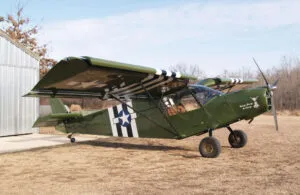
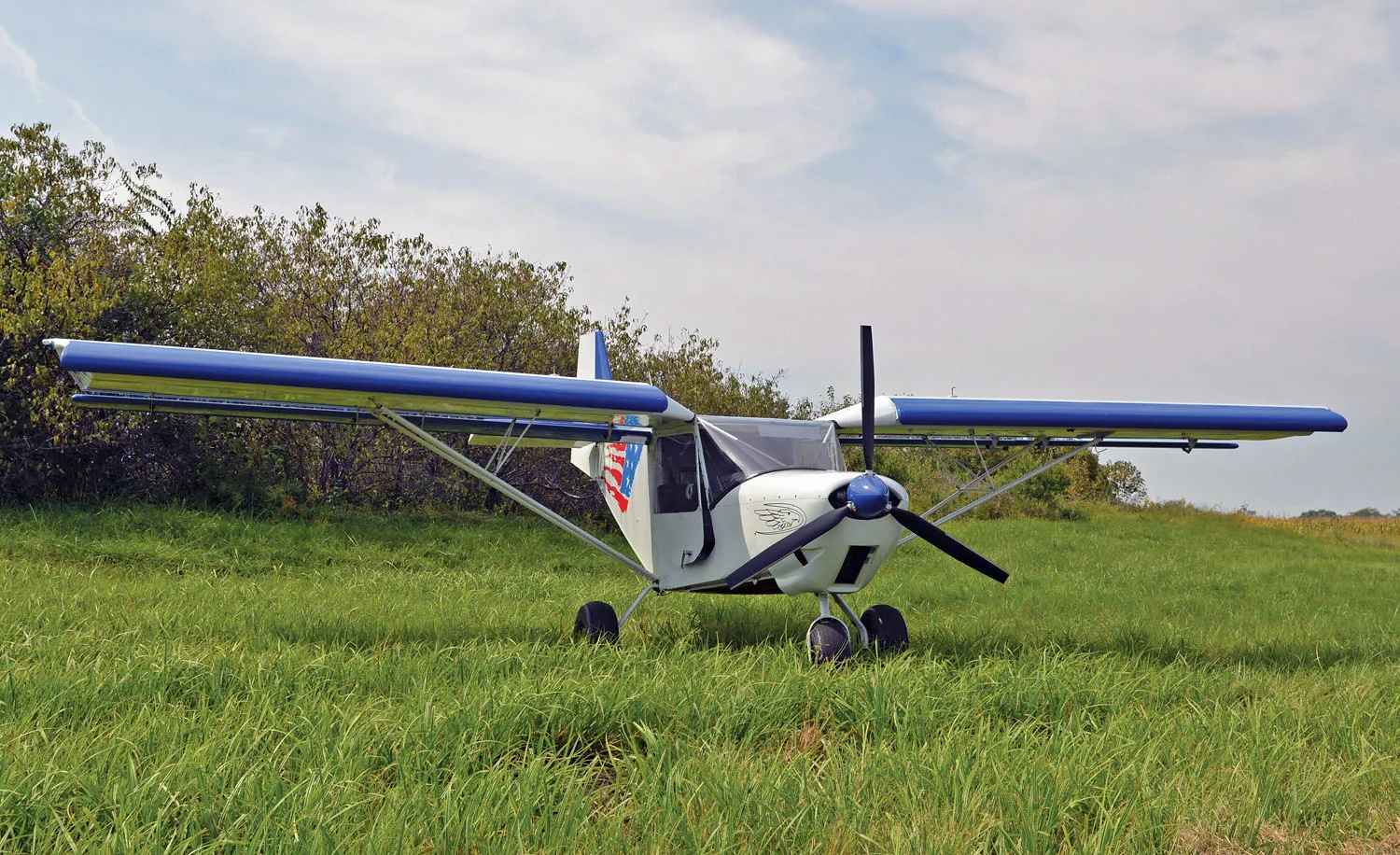
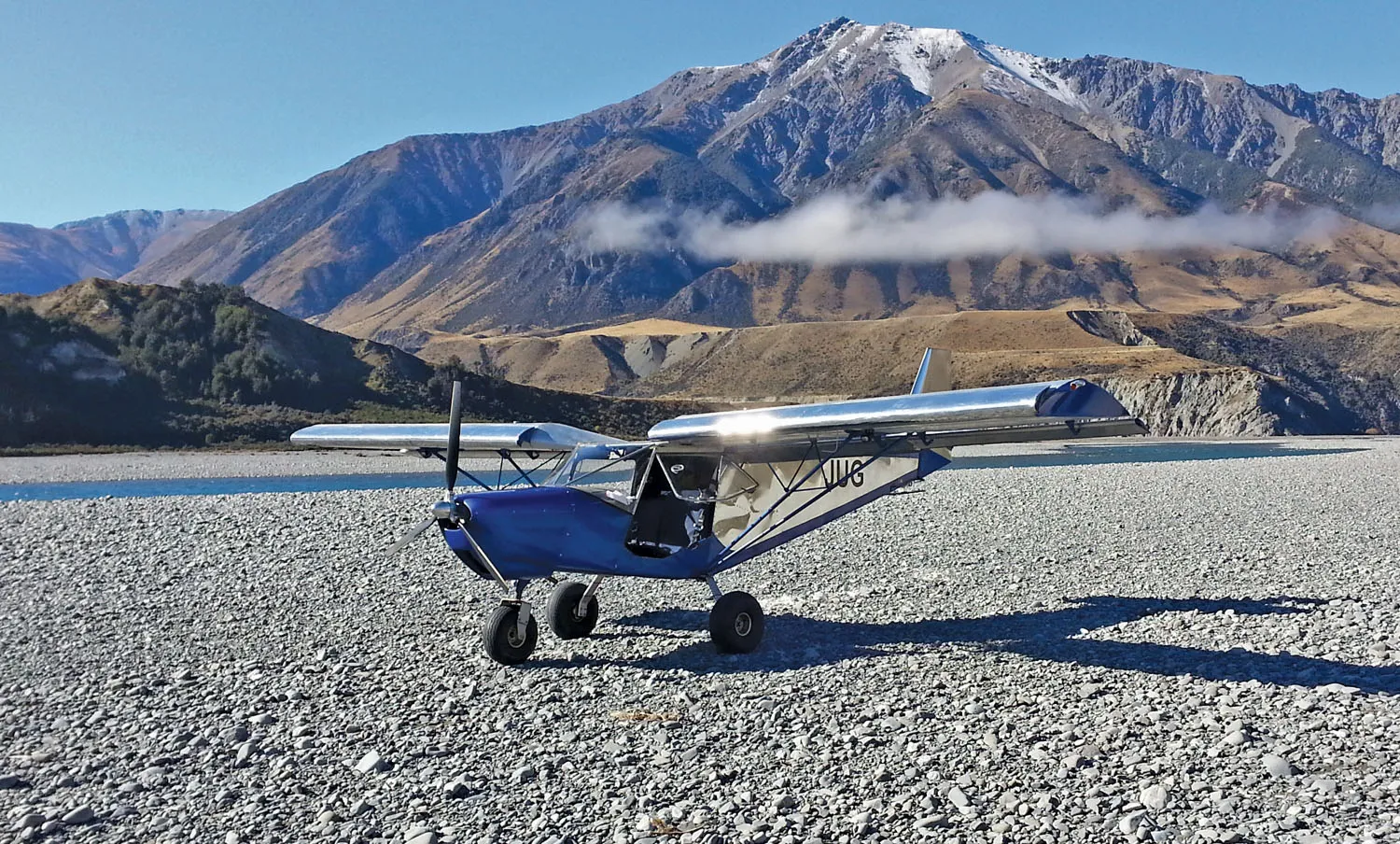
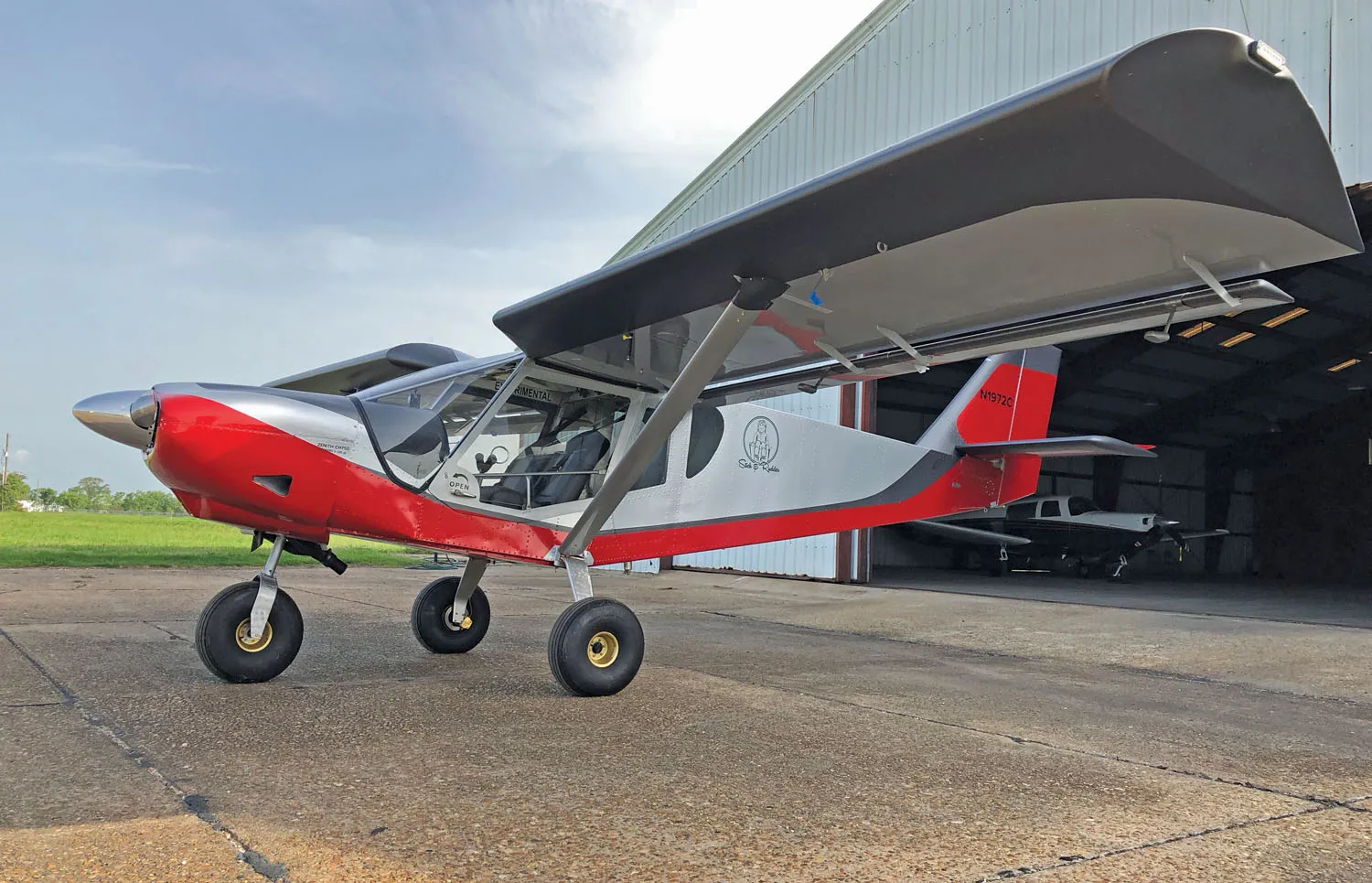

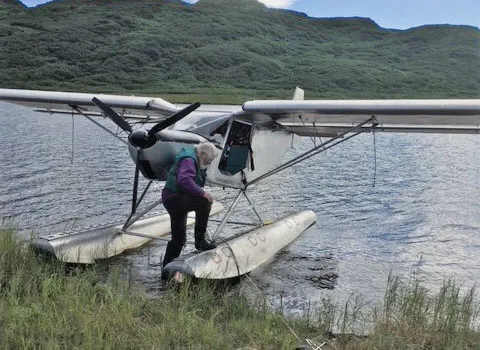
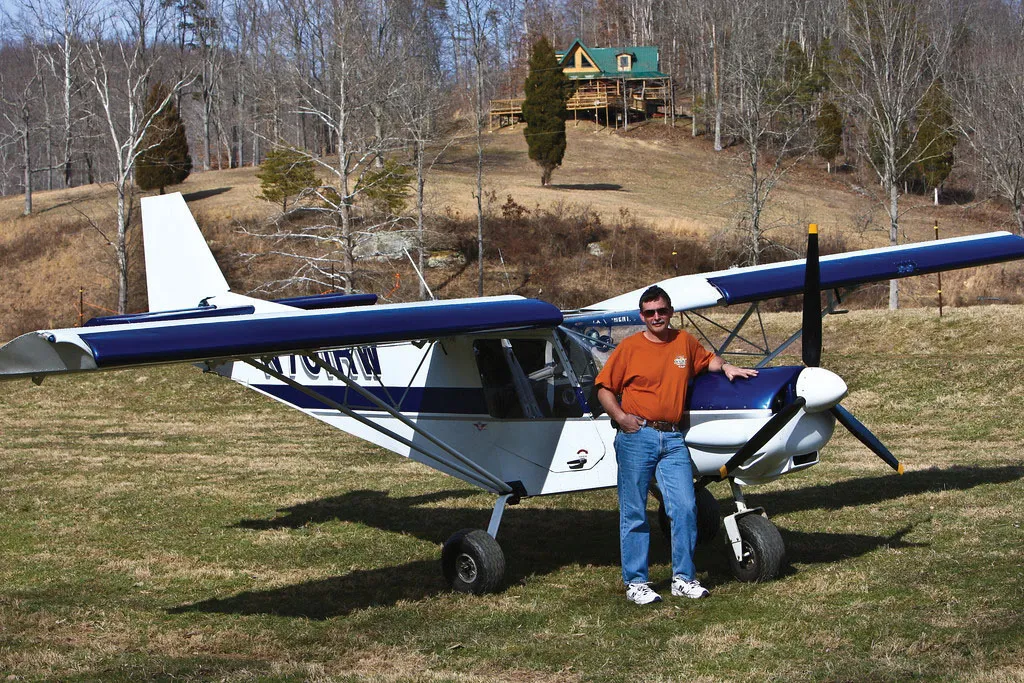

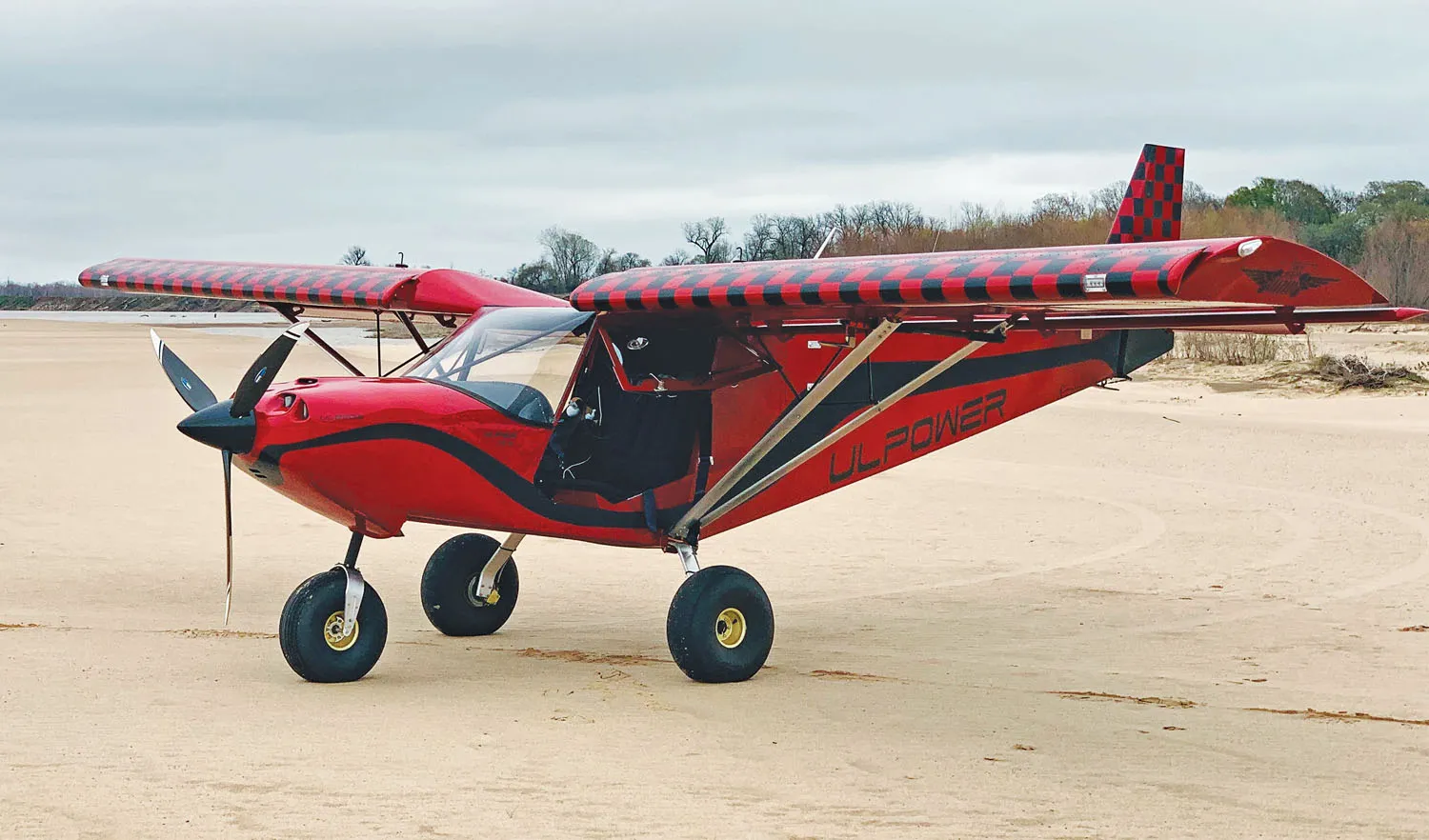

Thanks for sharing this article. The Zenith STOL CH 701 (often called the Sky Jeep by its owners) continues to gain popularity over the years thanks to its amazing STOL (short take-off and landing) capabilities and great slow flight handling characteristics. STOL competitions have become very popular events and the Zenith STOL CH 701 consistently performs very well compared to most other aircraft in its class. This past year was an exceptional year for the STOL CH 701 at competitions:
1) Deane Philip and his STOL CH 701 took first place finish at the 2021 New Zealand Bush Pilot Championships. Deane won the national event with both the shortest take-off and shortest landing in his Zenith STOL CH 701
2) Jon Hakala won the Bronze class in the STOL Drag 2021 World Championship at the High Sierra Fly-In in October, flying his Rotax-powered Zenith STOL CH 701.
3) Jon Humberd was the Overall Winner at the National STOL event with the shortest combined takeoff and landing distance at the Central Florida Classic STOL competition in December 2021. His winning combined takeoff and landing distance (behind the line) was just 159 feet (in no wind warm Florida conditions). Humberd won the very competitive national event flying his now famous “Super 701” (a stock kit-built STOL CH 701 powered by a 130-hp UL Power engine). He had a busy (and successful) year flying his CH 701 at various STOL events and competitions.
Here in more info on these events: http://www.zenith.aero/profiles/blogs/2021-year-of-the-ch701
Designed by aeronautical engineer Chris Heintz, the STOL CH 701 design has been offered as a kit airplane for more than 35 years now, and is available as a complete easy-to-build kit, component kits or plans-only (for scratch builders) versions. Coming later this year will be a significantly easier and quicker to build kit for this classic design as Zenith will be introducing a final hold size match-drilled kit for the STOL CH 701, making the kit dramatically easier to build!